
The goal of a maiko’s career is to become a geiko. As for every other special occasion, this particular event is also celebrated with a meaningful ceremony. It’s called erikae (衿替え/襟替え) or, roughly translated, “turning the collar”. The collar worn with a geiko kimono is indeed different than maiko’s one—completely white, in the front and the back, carefully sewn onto a light pink undergarment (襦袢juban) which replaces maiko’s red robes. It’s not only a visual change but a mental transition as well. After the maiko adapts the new collar, she steps into an entirely different path. From now on, it’s expected from her to be more autonomous, liable, mature, and diligent, as she slowly adjusts to working for her account. It’s the final exam of her art skills, the one she’s been waiting for since she first stepped through the door of her okiya.
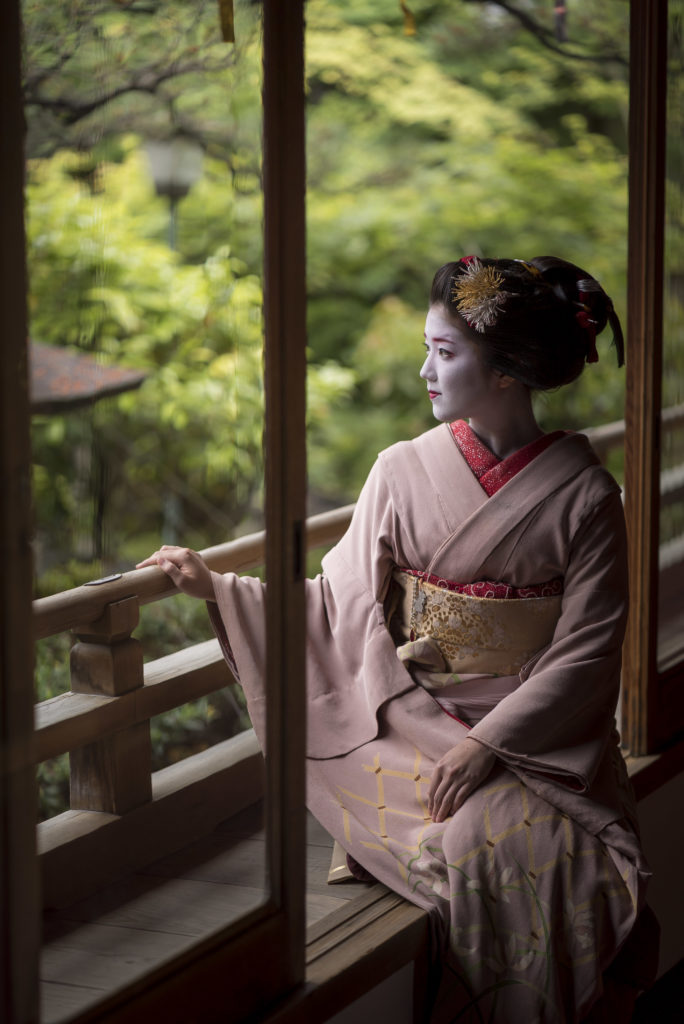
Preparations for this special celebration take months, though. Usually, a maiko is allowed to graduate between the age of 20 and 22. The exact moment of the ceremony depends on her skills, seniority, popularity, financial status, and even appearance. Erikae is followed by a number of unique maiko hairstyles, to signal the end of her apprenticeship. In general, an early bird of upcoming erikae is marked with wearing her obiage (帯揚げ; obi’s supportive cloth) tied, instead of leaving it flat. This practice, however, doesn’t apply to the Miyagawacho and Pontocho maiko—they start tying the obiage as soon as they become senior and inherit the ofuku hairstyle. Keeping it tied symbolizes maturity and elegance of the geiko.
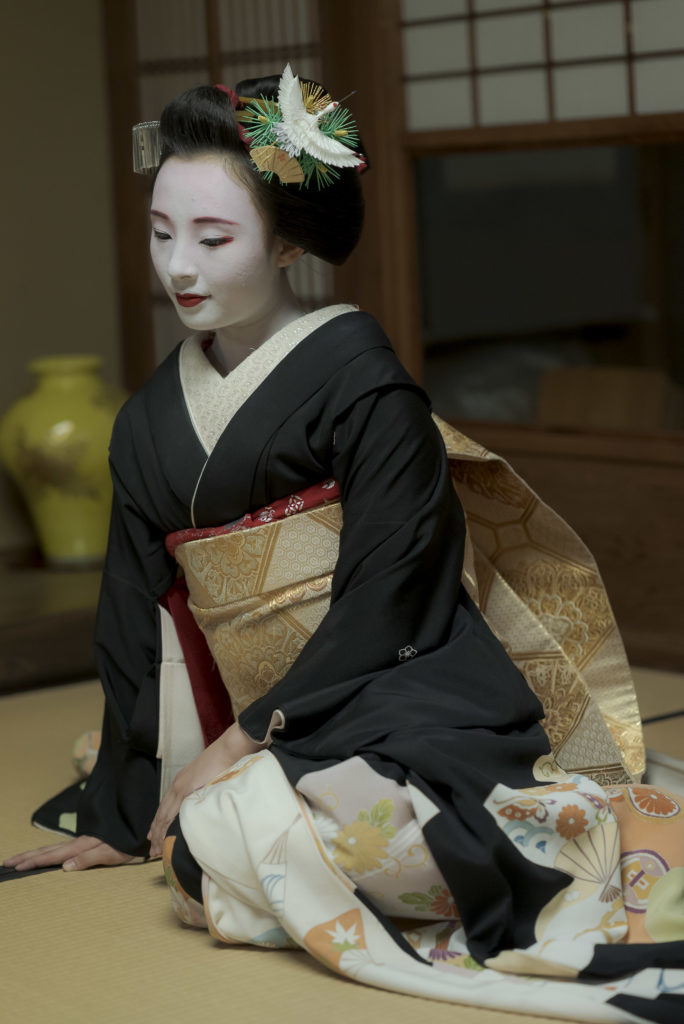
While the obiage is tied for several weeks or months, maiko gets the green light to style her hair in a celebratory hairdo—yakko shimada, adorned with orange-and-green coral beads. This hairstyle is used not only for the pre-erikae stage (in every single hanamachi), but also for various formal events of senior maiko—such as the New Year, Hassaku, tea ceremony, or ceremonial dance. For such occasions, yakko shimada goes along with the black crested kimono (黒紋付 kuromontsuki), but during the pre-erikae period, it can be worn with a standard dance kimono or colorful crested one (色紋付 iromontsuki). Sometimes the hairstyle itself is decorated with a highly formal crane kanzashi which correlates with the final hairstyle of the maiko—sakkou.
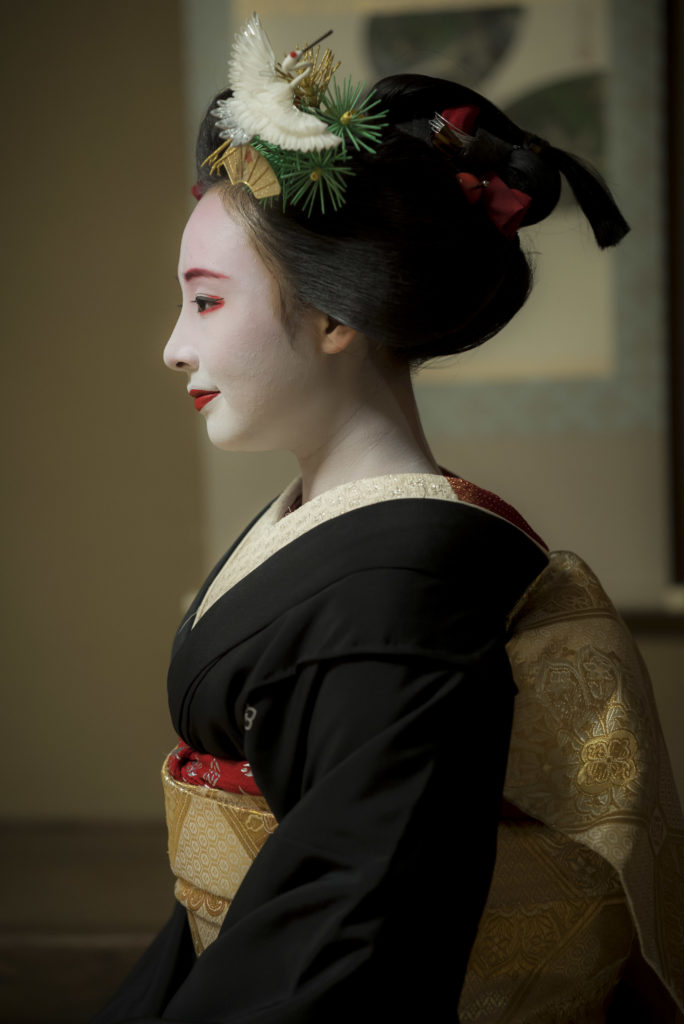
In Pontocho district, the pre-sakkou stage gets even fancier. Interestingly, Pontocho maiko tend to wear a bunch of supplementary hairstyles, prior to the yakko shimada period. Such hairstyles, Edo-inspired and unusual for our times, sometimes can be spotted during the hanamachi dress-up extravaganza of Setsubun. The repertoire of Pontocho’s first signals of the upcoming erikae includes suisha, yuiwata, osafune, and many more.
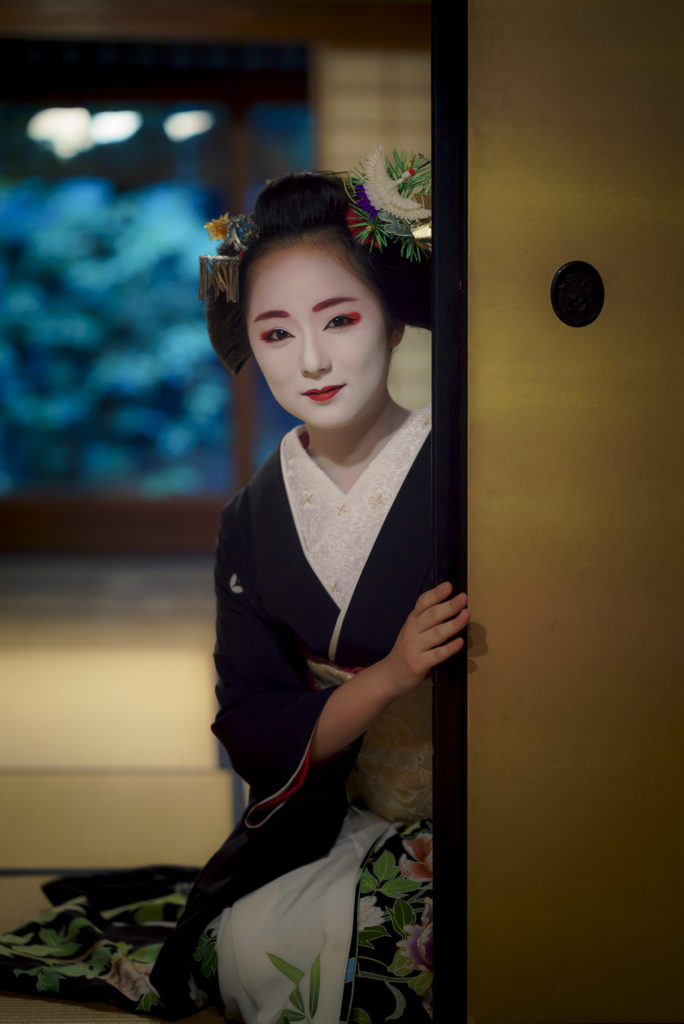
Graduation to the role of a geiko is marked with one of the most technically challenging hairstyles—sakkou (also known as saki kogai). It’s truly the art of Japanese hairdressing in its purest form. With the complicated shape comes a humble meaning. Sakkou used to be worn by brides-to-be in the Edo era, and it signified a dedication for a future husband. Geiko adapted the respectful tone of sakkou—this stunning hairstyle seals their devotion to the traditional arts. The husband is now the profession and the geiko, like a proper wife, takes over responsibility for her financials and bookings.

Despite the traditional role of sakkou in the geisha community, things got a little different nowadays. Modern geisha houses sometimes allow their most treasured maiko to wear sakkou without graduating to the role of a geiko. Upon an imminent retirement, after their contract expires, maiko may get a unique opportunity to celebrate the end of a fabulous career and accentuate an unbreakable bond with the okiya. This practice, however, diminishes the exceptional approach to the sakkou hairstyle as a symbol of the marriage with the traditional world.

The sakkou itself utilizes smooth arch shapes, silver wires, red bands, and oiled hair extensions. It’s the finest fashion that can be pulled off by maiko. This hairstyle is the most expensive one at local hair salons; thus the first time of wearing it is truly magical and full of joy. The sakkou period varies from one week to even a whole one month.
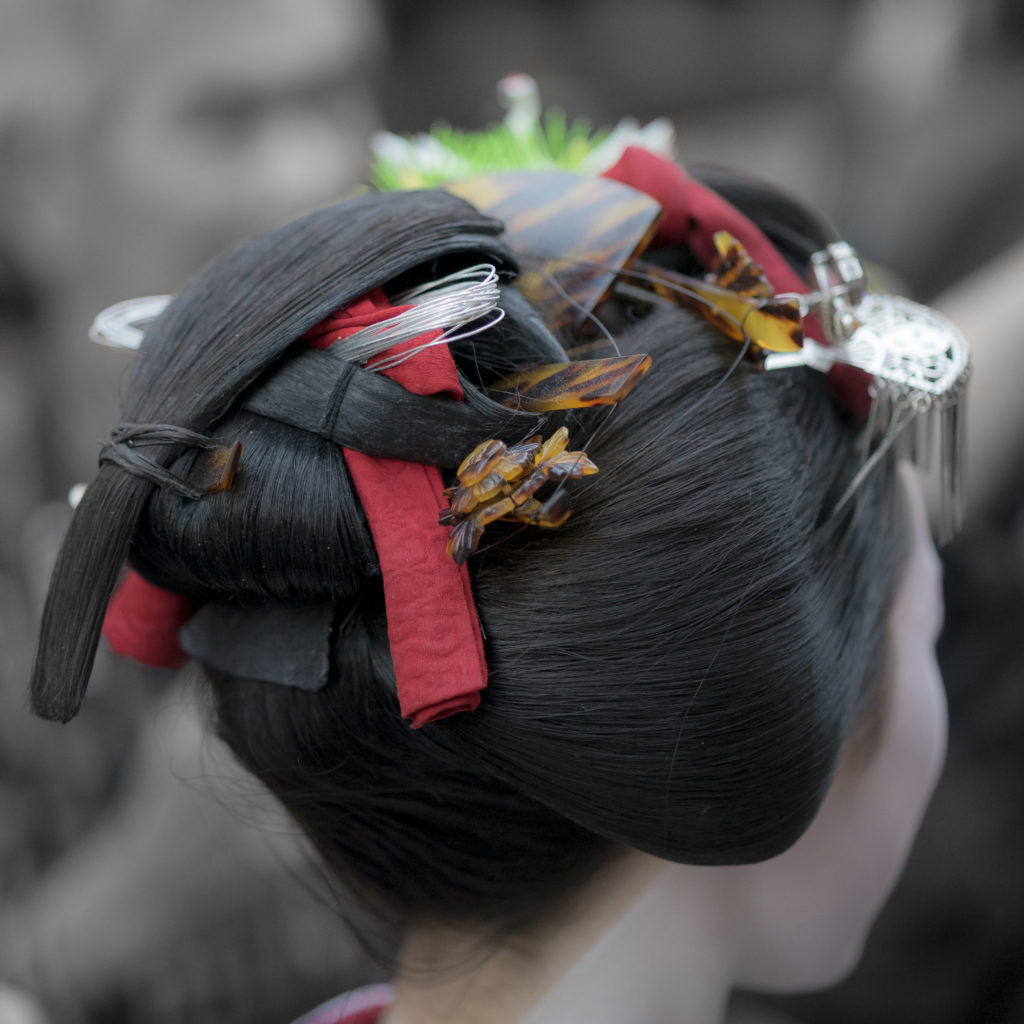
An even bigger eye-candy is an exquisite kanzashi sitting on the left front side of sakkou. Maiko can choose from several traditional celebratory symbols, techniques, and designs, such as cranes, treasure ships, golden turtles, water spills, okiya crests, phoenixes, and more. There’s a lot of possibilities which brings a lot of fun, as well. Double cranes with pastel ombre wings and mouths stuffed with pine needles, or additional paper kanji letters to spice up the form. Although the solid base is most often a bunch of pine needles, there’s room for a fantasy and customization, too—making it silver, gold, green, or even brown with cones. Huge, single cranes made from a sparkling thread are also a popular choice.
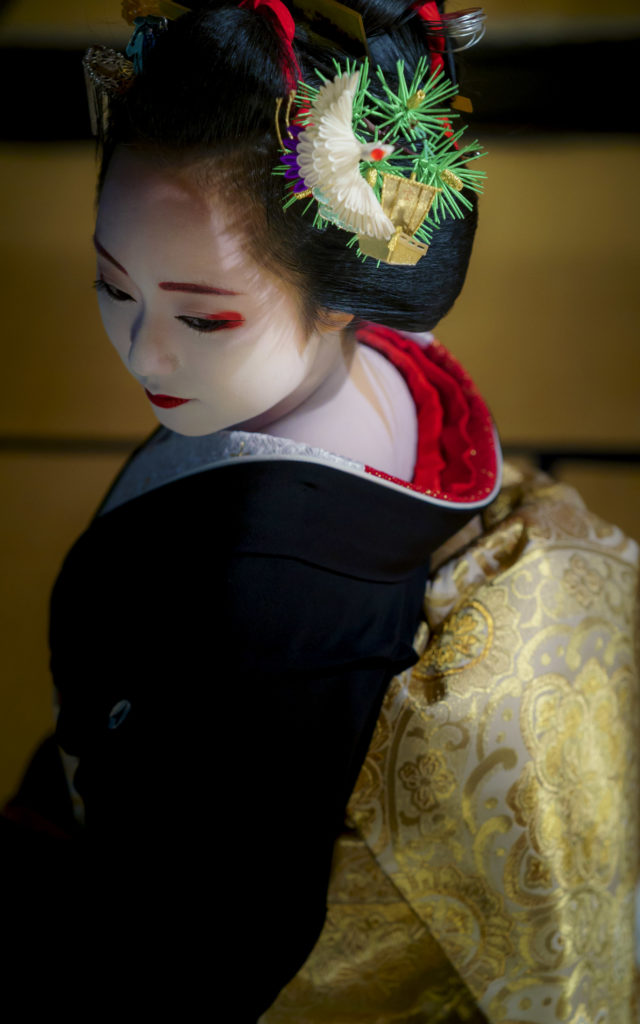
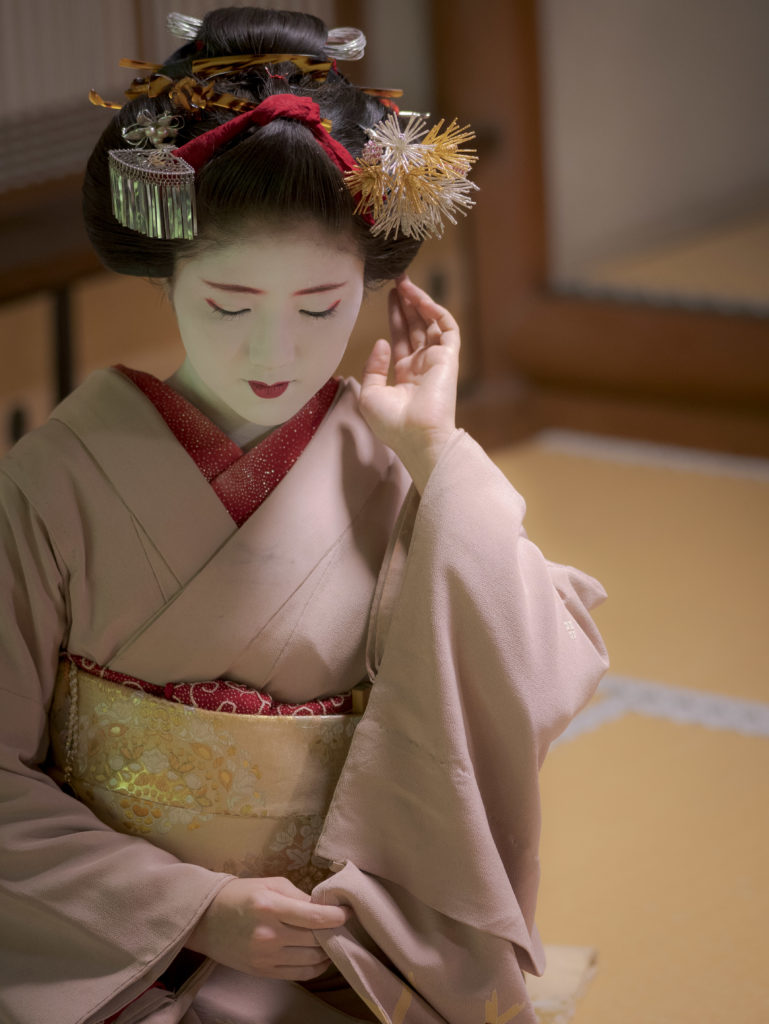
Despite the fact that sakkou stage concentrates on a hairstyle, a suitable kimono is as much important. As it is a highly formal occasion, most maiko get dressed in their most ceremonial, black dance kimono with five family crests. Usually, okiya maintain unique pieces, exclusively for their senior maiko. Black kimono are also worn for other formal events, so their patterns are appropriate for all types of commemorations in the hanamachi. Hand-painted cranes, water swirls, pines, chrysanthemums, shippou, kikkou, paulownias, turtles, uchide no kozushi, tabane noshi, and bamboo—all of them are the auspicious motifs that provide good fortune for a geiko-to-be.
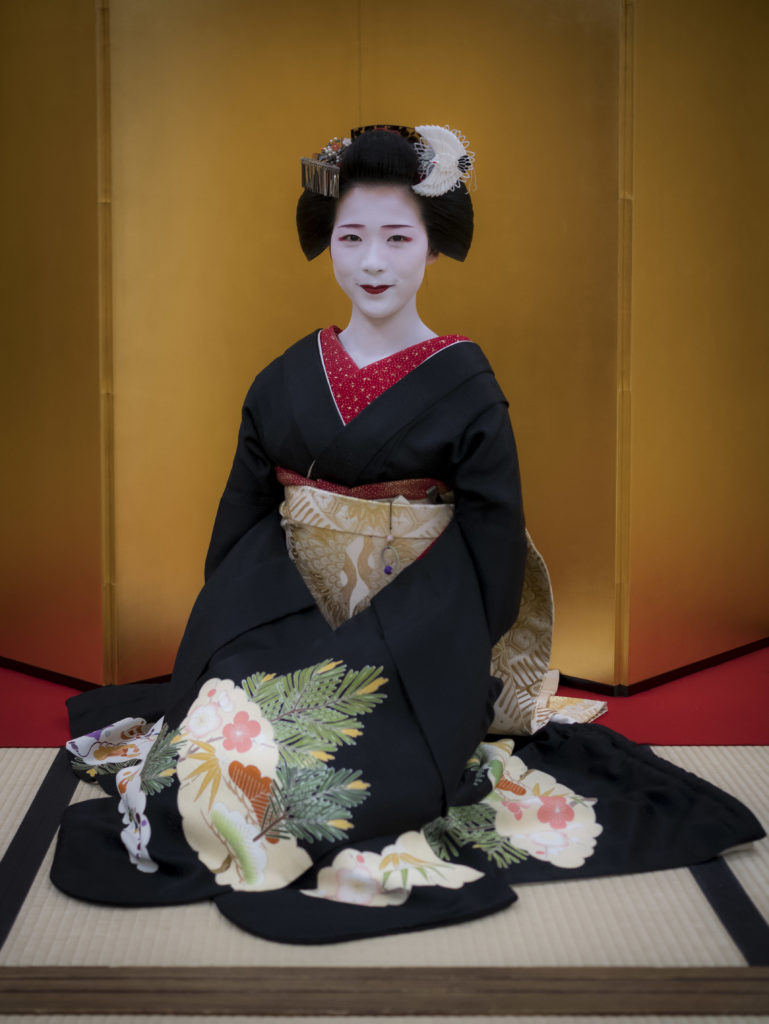
Nevertheless, some of the districts keep a tradition of wearing (additionally) a crested color kimono—iromontsuki. This custom is alive in Pontocho, Gion Higashi, as well as in some okiya located in the Kamishichiken and Miyagawacho area. It adds a lot of flavor to this captivating moment.
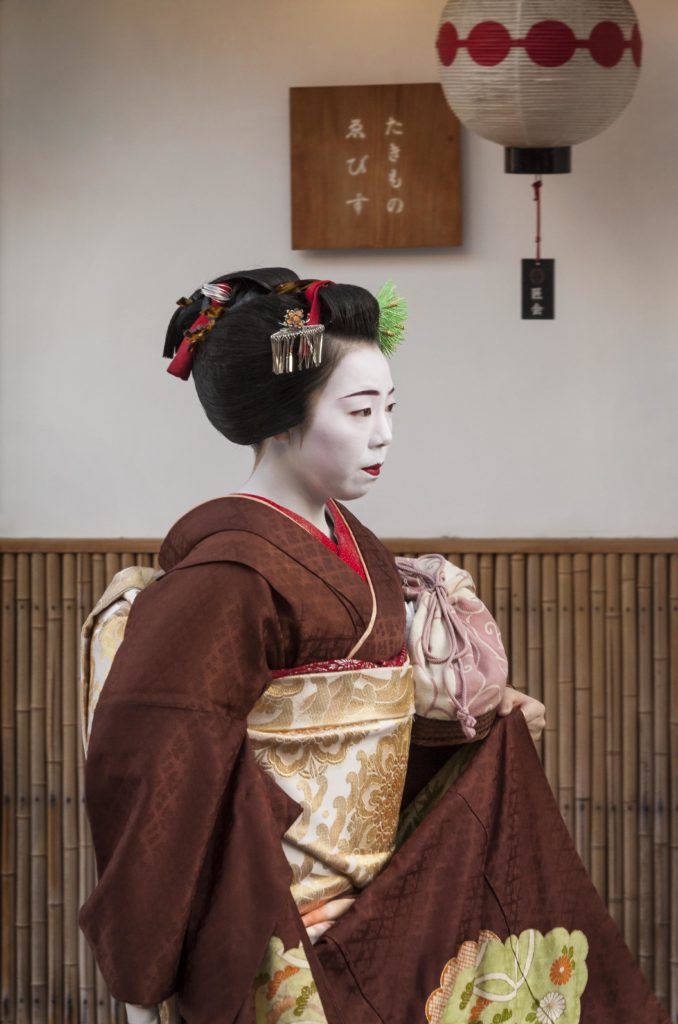
Celebratory hairstyle, makeup, and kimono are not enough, it seems. Interestingly, maiko’s teeth also receive a special treatment during the sakkou stage. Some maiko tend to blacken their teeth, accordingly to an old custom called ohaguro. A thick paste, used by many women until the Meiji era, covers the teeth completely and creates a ghostly illusion. It might be a bit inconvenient for some maiko too, as ohaguro needs to be re-applied after every single meal. Hence, ohaguro is a matter of a personal choice nowadays.
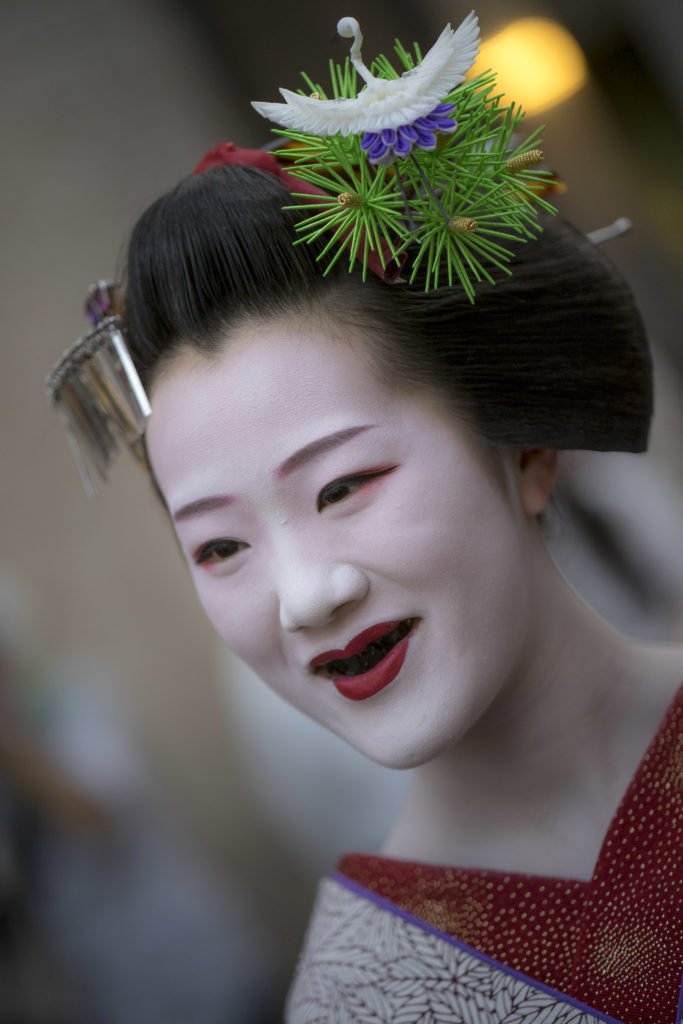
But sakkou is not all about the looks.
It’s also a teary, bittersweet time that reunites the whole geisha family, with its culmination in the final night. During the entire sakkou period, maiko perform a symbolic dance called Kurokami (“Jet-Black Hair”). This particular act portrays a nostalgic story of a mature woman who has lost her cherished lover. She’s weeping in the middle of the night to the memories of the times they’ve been sleeping together.
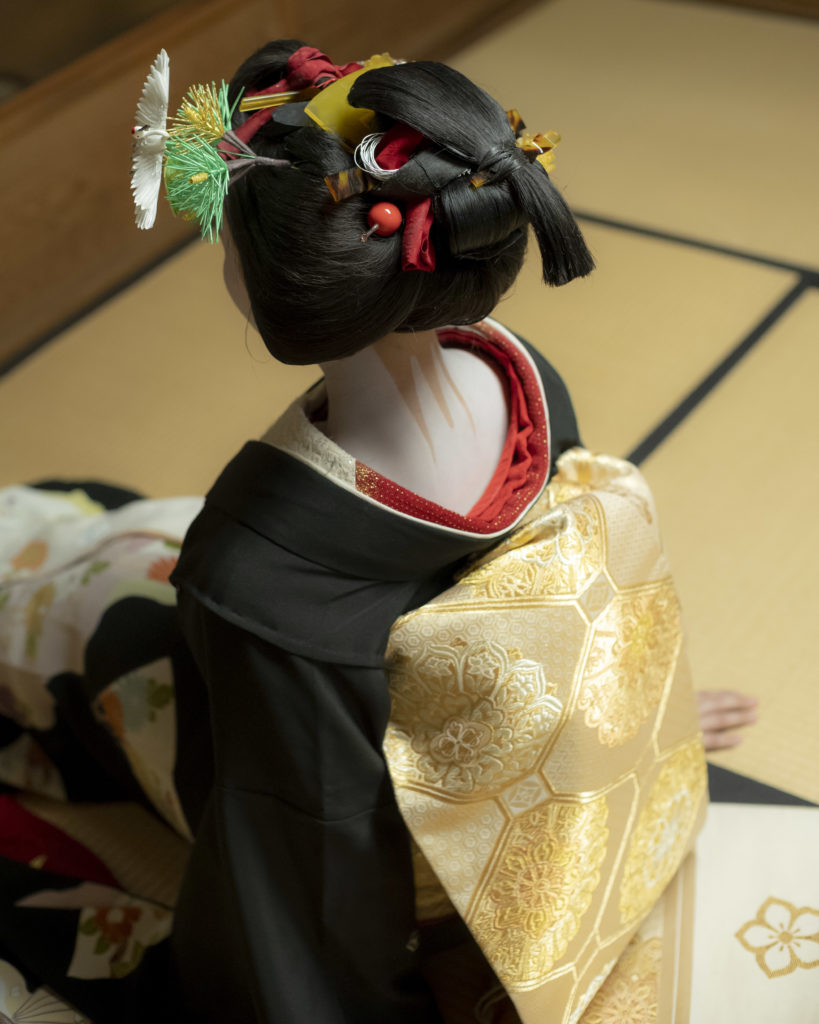
Everyone wants to witness the ultimate performance of Kurokami by the sakkou maiko. The okiya clan, friends, patrons, family, and favorite customers gather at a teahouse for Danpatsu Shiki. It’s a closing ceremony of a maiko’s career. After the dance, guests get an opportunity to cut streaks and wires off the sakkou, so the maiko’s hair can be freed from the burden of nihongami. This custom is accompanied by sobs, shutter clicks, sighs, and applause.
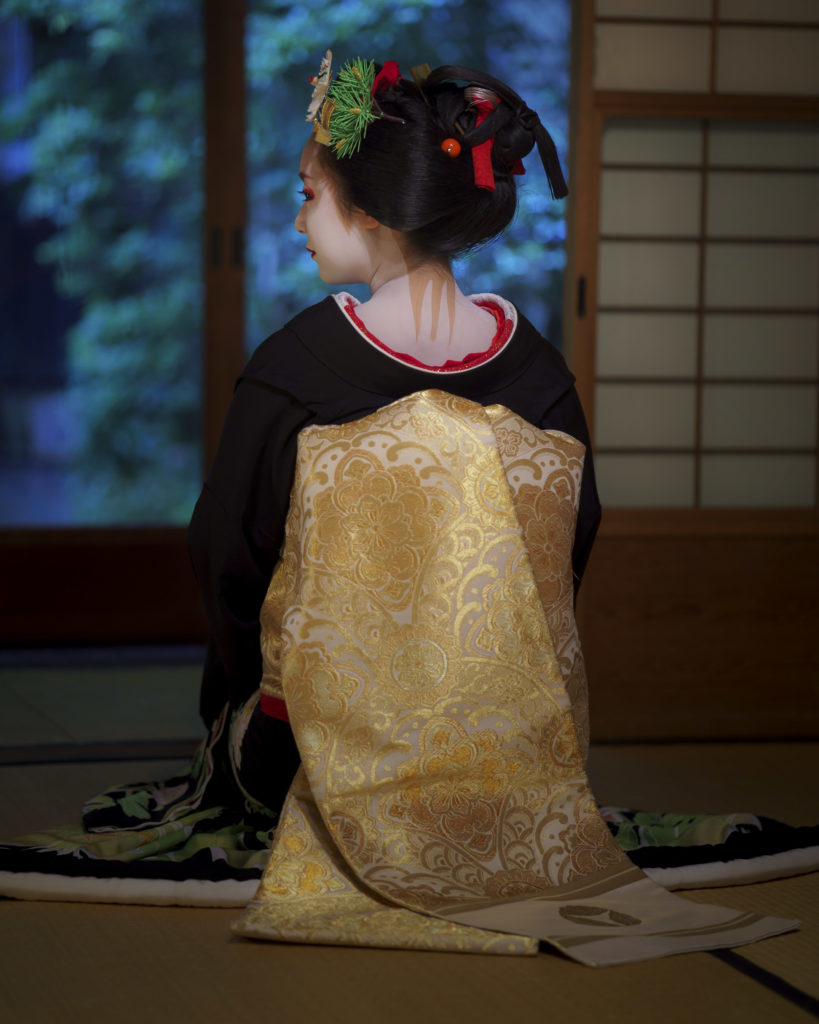
The maiko, liberated from an overwhelming lifestyle, is now ready to transform into a full-fledged child of the traditional arts. Though firstly, she has a well-deserved day off ahead of her.
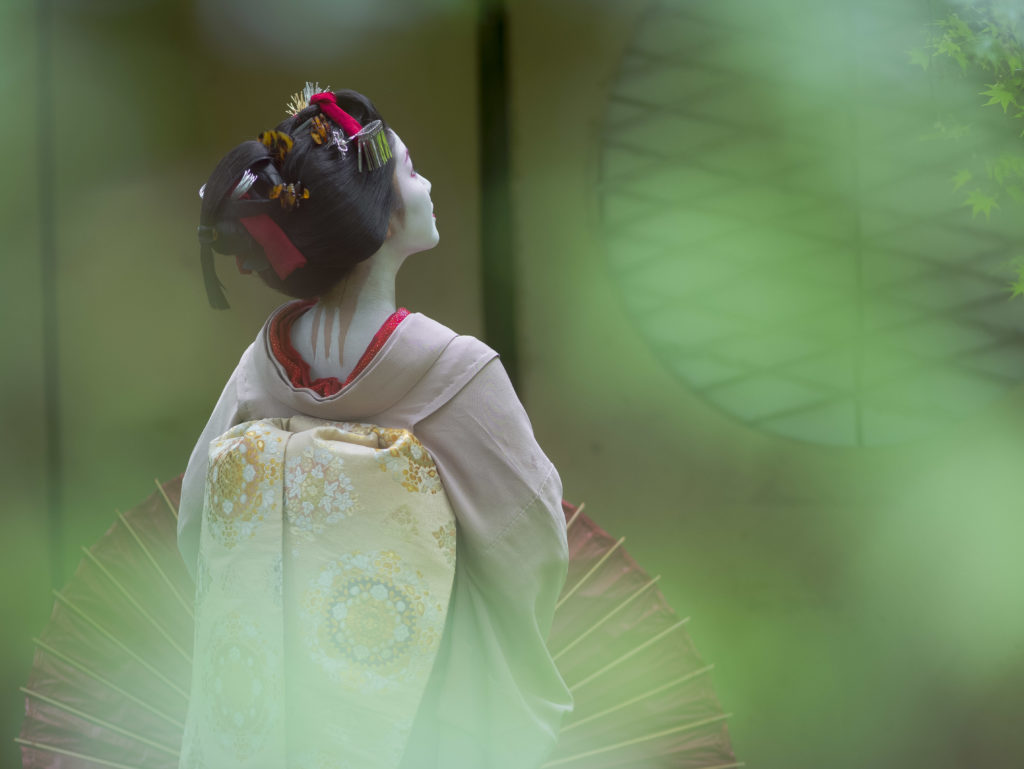
![]() All photographs in courtesy of amazing Gaap san and Paul van der Veer (maiko Ichitaka’s portrait)
All photographs in courtesy of amazing Gaap san and Paul van der Veer (maiko Ichitaka’s portrait)

Hello,
Thank you for such a beautiful and interesting article!
Great reading material Mari!
Thank you very much!
Very much appreciate this! So fascinating and beautiful!!